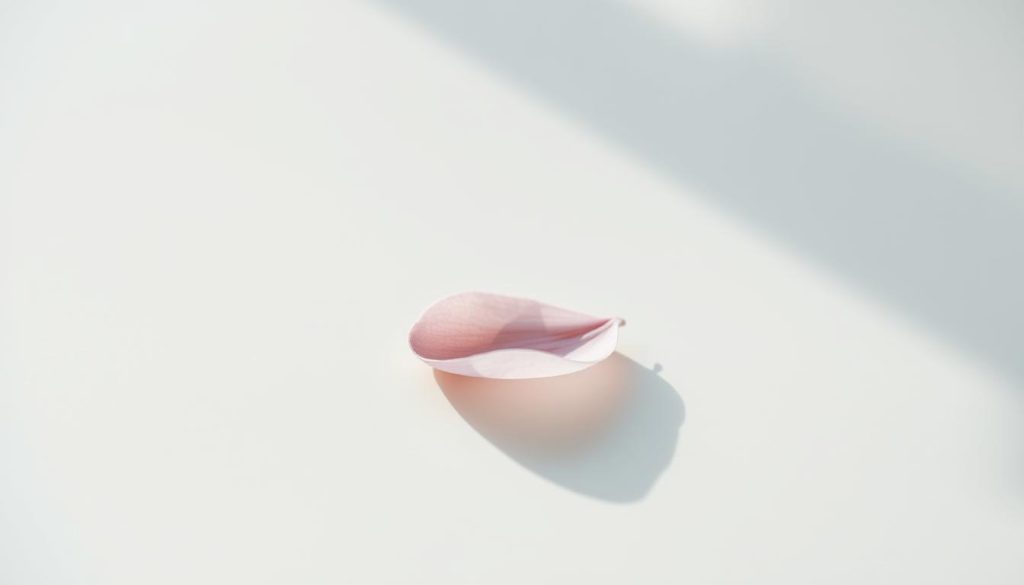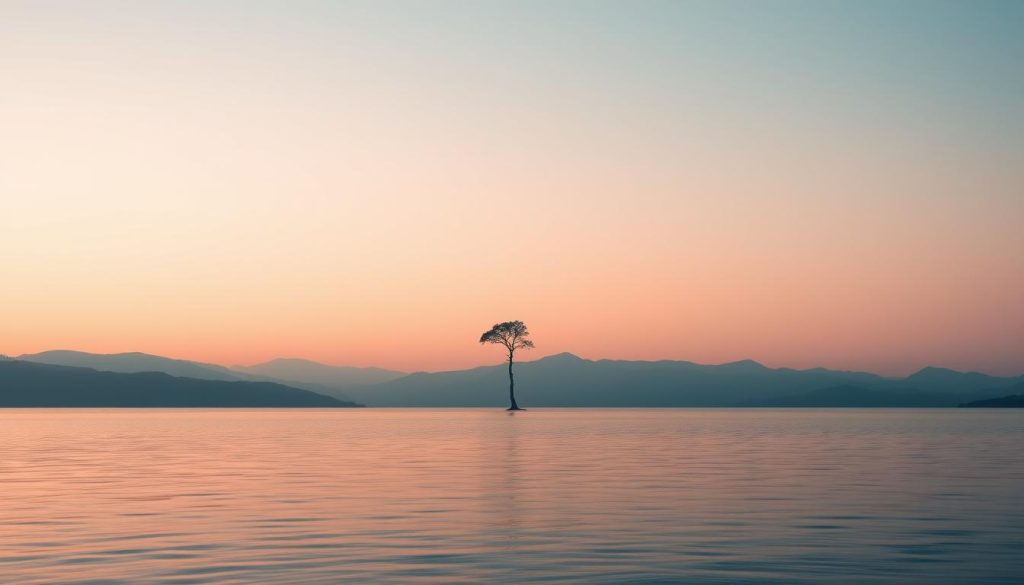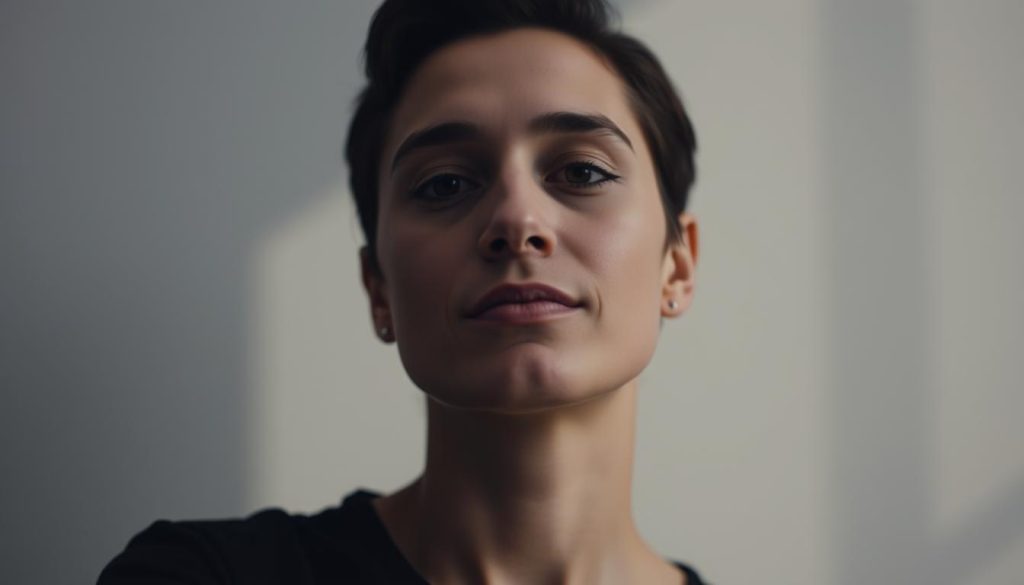I’m excited to share minimalist photography ideas with you. This style finds beauty in the simple. I’ll show you how to make visually striking images that show your unique view.
These minimalist photography ideas are for all photographers. They help you see the beauty in simplicity. You’ll learn to make photos that capture the essence of simplicity in photography.
In this article, we’ll explore minimalist photography basics. We’ll talk about using negative space and simple compositions. You’ll also learn about texture and pattern in photos.
I’ll share tips to improve your minimalist photography skills. You’ll learn to create your own style.
Are you ready to explore visual simplicity? Let’s start our journey in minimalist photography. We’ll discover how to capture simplicity through photography.
What is Minimalist Photography?
Minimalist photography is a style that loves simplicity. It captures the essence of a subject by removing extra details. This style aims to show a clear message through clean images.
Embracing the Beauty of Simplicity
Minimalist photographers believe in the power of less. They use empty space to add to their photos. By focusing on shape, texture, and lines, they make images that are both beautiful and moving.
The Essence of Minimalist Composition
- Emphasis on Negative Space: Minimalist photographers use negative space skillfully, allowing it to become a central element in their compositions.
- Focus on Form and Texture: They pay close attention to the shape, lines, and textures of their subjects, highlighting these elements to create a sense of visual interest.
- Minimalist Composition Techniques: Techniques like symmetry, repetition, and simplicity are used to create clean, balanced, and captivating images.
By mastering minimalist composition, photographers turn the ordinary into something special. They encourage us to slow down and see the beauty in simplicity.
Minimalist Photography Ideas

Explore these inspiring minimalist photography ideas. Learn to capture the beauty of a single object or create abstract compositions. I’ll share techniques to help you develop your style. Get ready to make your shots simpler and more elegant.
Using negative space is key in minimalist photography. Leave empty areas in your frame to focus on your subject. Try framing a single item against a plain background or isolate a subject in vast empty space.
Also, explore symmetry and patterns. Look for repeating shapes, lines, or textures. Arrange your composition to highlight these elements. This can create striking, abstract images that grab the viewer’s attention.
- Embrace the beauty of a single object
- Experiment with negative space to create minimalist compositions
- Explore symmetry and patterns for visually striking images
- Play with lighting and shadows to accentuate the minimalist aesthetic
- Simplify your subject matter and focus on the essential elements
Lighting is also crucial in minimalist photography. Use shadows, silhouettes, and high-contrast lighting to add drama and depth. By controlling the light, you can highlight your subject’s shape, form, and texture.
The secret to great minimalist photography is focusing on the essentials. Simplify your subject, use negative space, and let your composition’s beauty shine. With these minimalist photography ideas, you can explore new creative possibilities. Capture stunning, creative minimalist photography that shows off your unique minimalist photography techniques.
The Power of Negative Space
In the world of minimalist photography, negative space is key. It’s the empty areas in an image that aren’t filled by the main subject. This empty space can make your photos look amazing and balanced.
By using negative space, you can make your subject stand out. It can also bring a calm feeling to your photos. Plus, it gives them a sleek, modern look.
Framing Your Subject with Negative Space
One great way to use negative space is to frame your subject. Don’t fill the whole frame with your main subject. Instead, leave lots of empty space around it.
This empty space can be a clear sky, a simple background, or a big area of water or land.
- Use negative space to give your subject room to breathe, making it the main focus.
- Place your subject off-center to balance the photo and add interest.
- Try different angles and views to find the best way to frame your subject with negative space.
Learning to frame with negative space can make your minimalist photos stand out. It’s all about simplicity. Let the empty space in your photos do the magic.
Exploring Minimalist Landscapes

Landscapes are perfect for minimalist photography. They let you see the natural world in its simplest forms. You can capture wide-open spaces and small details. Discover the beauty of minimalist landscape photography.
Minimalist photography is about keeping things simple. It focuses on shapes, light, and empty space. Look for scenes that are already simple, like vast views or simple shapes.
To simplify landscapes, focus on the composition. Look for clean lines and shapes. Try different angles to highlight these and remove clutter.
- Seek out scenes with clean, uncluttered backgrounds
- Utilize leading lines and shapes to guide the viewer’s eye
- Embrace the power of negative space to create a sense of calm and balance
- Explore the interplay of light and shadow to add depth and drama to your compositions
Mastering the art of simplifying landscapes opens a new world of photography. Grab your camera and explore the outdoors. Start capturing the beauty of minimalist landscape photography.
Minimalist Portraiture: Capturing Emotion

Minimalist portrait photography is a unique way to show what’s important. It’s about keeping things simple to highlight your subject’s true self. This style lets you create portraits that touch people’s hearts.
Finding the Perfect Lighting
Lighting is key in minimalist portraits. It can make your photos feel more emotional. Try different lights to find the right one that makes your subject stand out.
- Use natural light, like soft window light, for a calm feel.
- Try bold, direct light for deep shadows and highlights.
- Go for simple, single light setups to focus on your subject.
Learning about minimalist lighting can make your portraits even more powerful. It helps you show the true feelings of your subjects.
Minimalist Still Life Photography
Minimalist still life photography is a beautiful way to show the charm of simplicity. It involves arranging a few chosen objects to make stunning images. These images bring a calm and thoughtful mood. Here, I’ll give tips on making impactful minimalist still life pictures.
Arranging Objects for Maximum Impact
The secret to great minimalist still life photos is in how you arrange your subjects. Choose a few items that match your artistic style. This could be a beautiful vase, a set of smooth stones, or a simple shape.
Place these items with care. Think about the empty space around them and how lines, shapes, and textures work together.
- Try different ways to place and turn your objects to find the best look.
- Use empty space to balance and highlight your main subject.
- Notice how your objects relate to each other.
Minimalist still life photography is all about focusing on the most important parts. By picking and arranging your subjects wisely, you can make images that grab the viewer’s attention. These images can also bring a feeling of peace and thoughtfulness.
It doesn’t matter if you’re taking a single item or a few together. The goal is to let your simple setup stand out. Use empty space, experiment with angles, and let your minimalist photos inspire and amaze your viewers.
Minimalist Photography Ideas Through Texture and Pattern
In the world of minimalist photography, texture and pattern are key. They help create stunning images. By focusing on details and repeating elements, you add depth and harmony to your photos.
Look for natural surfaces with intricate patterns like rough stone or weathered wood. These add depth and interest to your photos. They make the viewer feel like they can touch the image.
Patterns can be found in nature and man-made things too. From architectural details to leaves, they bring rhythm and balance to your photos.
When using texture and pattern, light and shadow are crucial. The way light hits these elements changes the mood of your photo. Try different lighting angles to find the best way to show off textures and patterns.
Adding texture and pattern to your photos makes them more interesting. Look for these elements and get close to capture their details. This will make your minimalist photos truly stand out.
Editing for Minimalist Impact
Editing is key to unlocking your minimalist photography’s true potential. It lets you refine your work and highlight its simplicity and elegance. Here, I’ll share editing techniques and tips to make your photos stand out.
One important editing technique is selective cropping. It helps focus the viewer’s attention on the main subject. By removing distractions, you create balance and harmony. Try different crop ratios to find the best fit for your minimalist photo.
Color adjustment is also crucial in post-processing minimalist photos. Small changes in color can change the mood of your images. Use muted colors to enhance simplicity or pops of color for a bold statement. Always aim for a refined, minimalist look.

